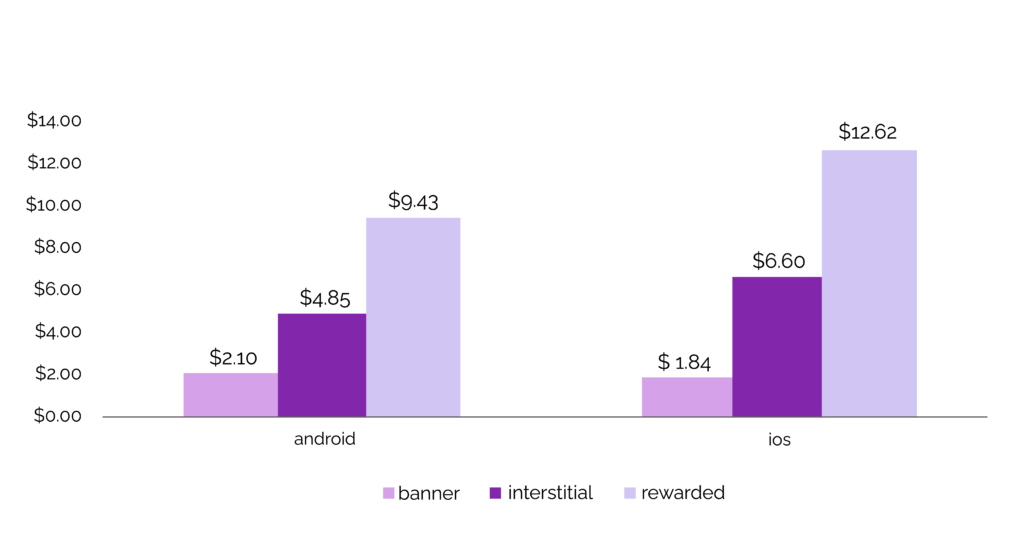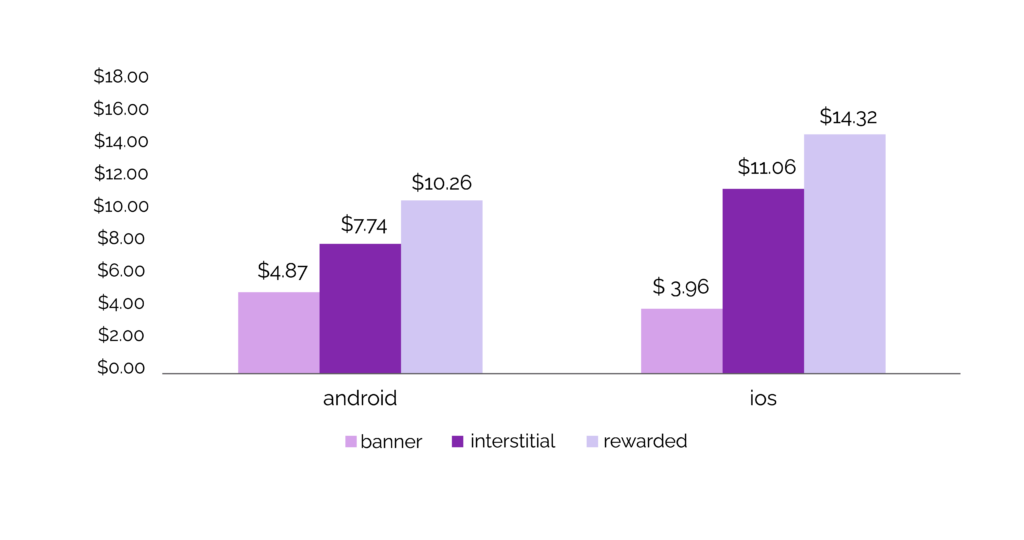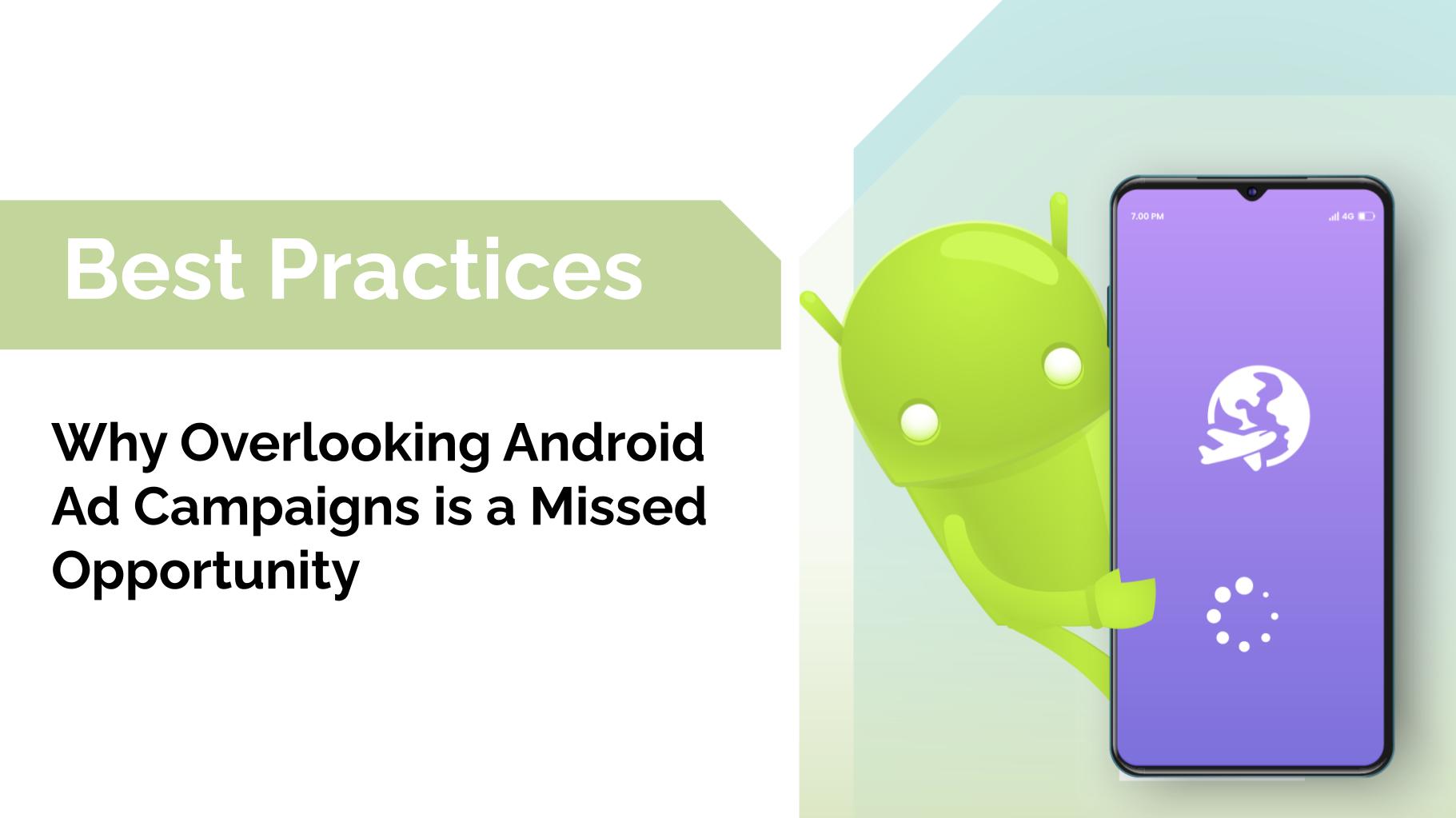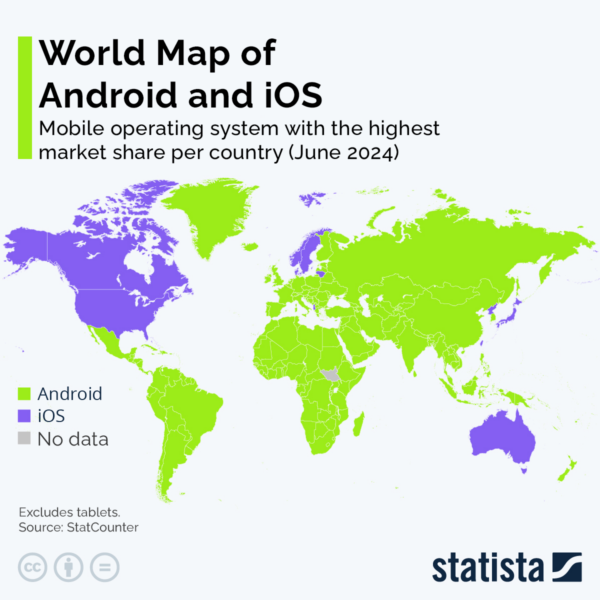As of 2024, Android has a 70.7% market share worldwide (Statista). This information might surprise many since iOS seems to be the most popular operating system (almost everyone has an iPhone), but it’s the truth, and it might paint a different picture for mobile app advertisers.
In certain regions, particularly the United States, iOS retains a significant 60.7% market penetration (backlinko) and enjoys greater favorability among certain demographics. However, Android’s user-friendly interface, extensive app ecosystem, and accessibility to broader audiences have contributed to its success, especially in emerging markets.
- India 95%
- Brazil 81%
- Mexico 77%
- China 74%
This allows mobile app advertisers to tap into a massive user base and an ideal platform to reach a broader audience. However, running Android ad campaigns is often overlooked, and neglecting it can be a strategic oversight. Here’s why:
Android’s Market Share and User Base
- Broader Audience: As mentioned before, Android holds a larger market share globally than iOS, representing a vast potential user base with an average of 3 billion users worldwide.
- Diverse Demographics: Android users come from a wider range of socioeconomic backgrounds, which offers marketers the opportunity to broaden their target audience.
Cost Efficiency
- Acquisition Costs: Generally, user acquisition costs on Android are lower than on iOS, allowing more efficient budget allocations. As shown in the graphs below, the CPI of non-gaming and gaming apps in iOS is higher than that of Android almost across all types of placements.

CPI of Non-Gaming Apps Android VS. iOS

CPI of Gaming Apps Android VS. iOS
Ad Formats and Creatives
Android generally supports a wider range of ad formats and creative possibilities than iOS. For example, when it comes to Custom Product Pages VS. Custom Store Listings, Android offers far more customization capabilities:
| Custom Product Pages (iOS) | Column 3 | |
|---|---|---|
| # of Versions | 35 | 50 |
| App elements that can be customized | Screenshots, video, promotional text | Title, short and long descriptions, icons, feature graphics, screenshots, video |
| Review time by app store | Up to 24 hours | Up to 1 hour |
| Traffic sources that can be targeted | Only paid traffic | All traffic sources – organic, paid, and referral |
| Country specific targeted | Yes | Yes |
| Integration with paid channels | Yes. With Apple Search Ads and Facebook Ads. | Yes. With Google app campaigns, but currently not available to all app publishers. |
| Dedicated URL | Yes | Yes |
Privacy, Data, and Targeting
The introduction of Apple’s App Tracking Transparency (ATT) has significantly impacted data collection and optimization strategies for iOS campaigns. While this is still an important topic of concern, the impact of measures to protect users’ privacy has been less severe on Android.
Prior to Apple’s recent AdAttributionKit announcements, SKAdNetwork severely limited the feasibility of re-engagement campaigns on iOS. Android, with its larger user base and more comprehensive data accessibility, has consistently offered a more conducive environment for precise targeting and effective re-engagement strategies.
Benefits of Combining iOS and Android Ad Campaigns
Tapping into both iOS and Android users maximizes reach, expands visibility, and reinforces your brand’s potential for app discovery. Having a consistent presence across both OS helps increase brand awareness.
The mobile app landscape is constantly changing. Strategically diversifying your ad spend across iOS and Android supports a strong campaign and mitigates the risks associated with specific OS changes.
While iOS’s relevance as the most lucrative platform in terms of consumer spending is unquestionable, ignoring Android means missing out on a substantial portion of the mobile app user base. A balanced strategy that cleverly includes both operating systems is essential for achieving long-term success and maximizing your app’s potential.

